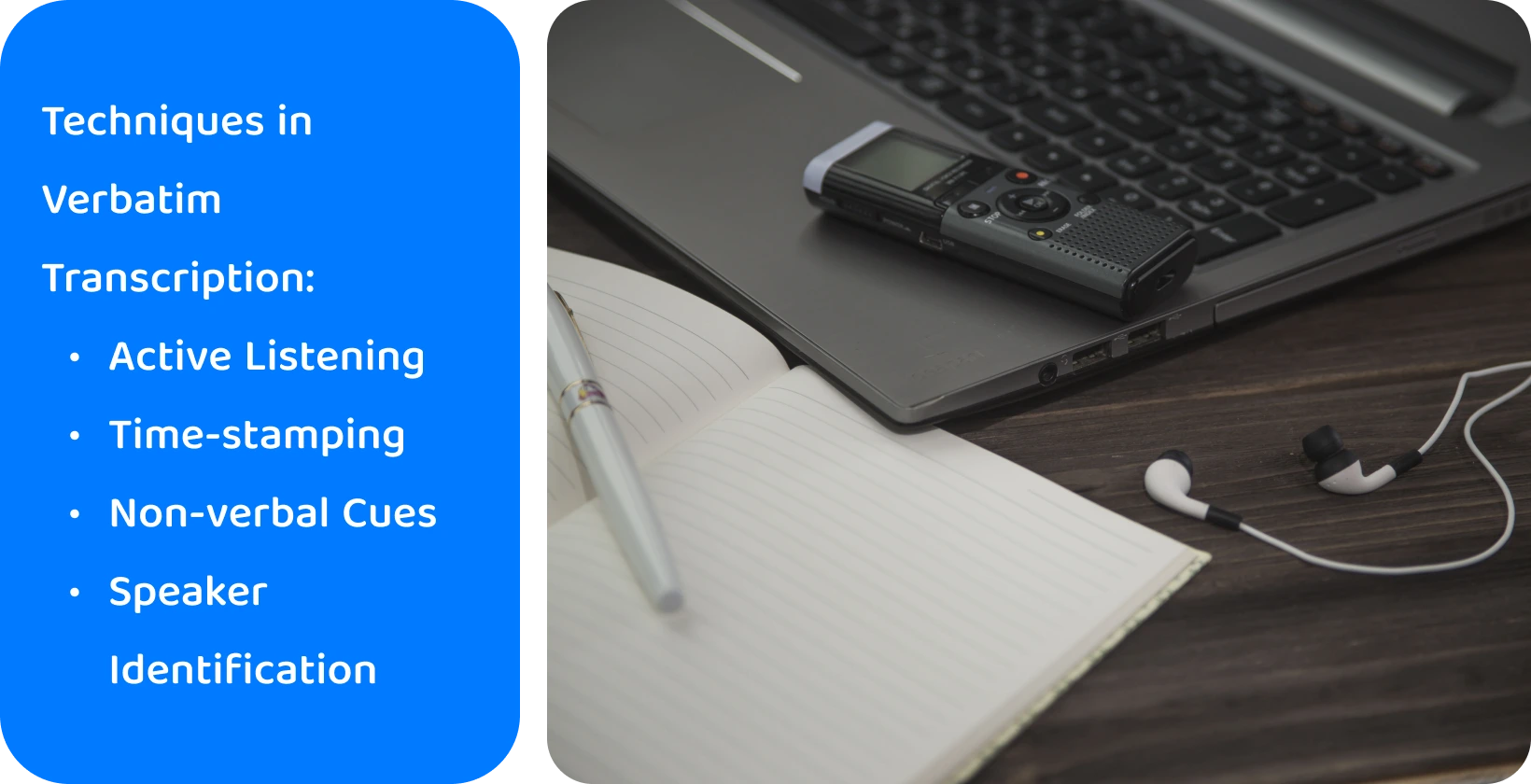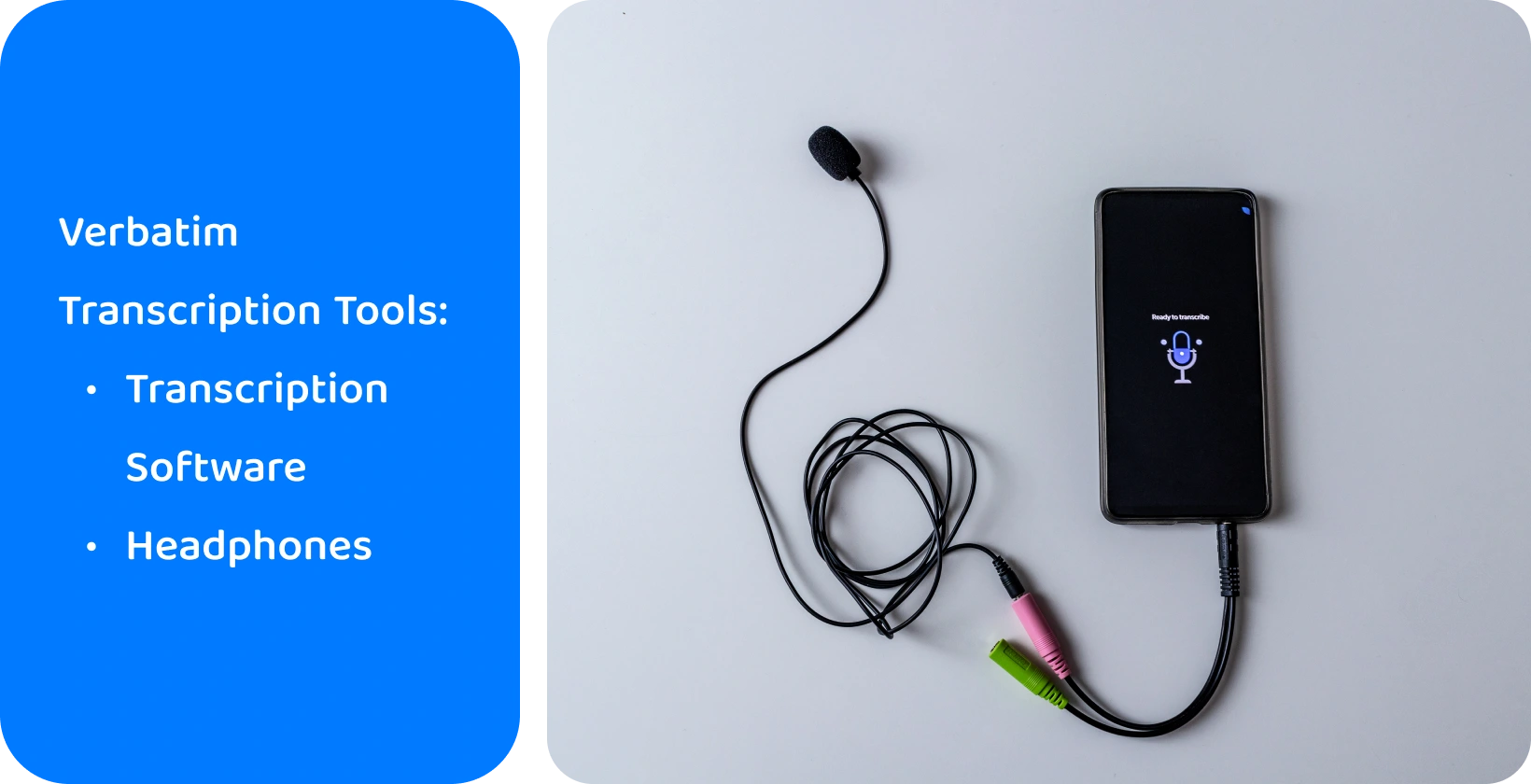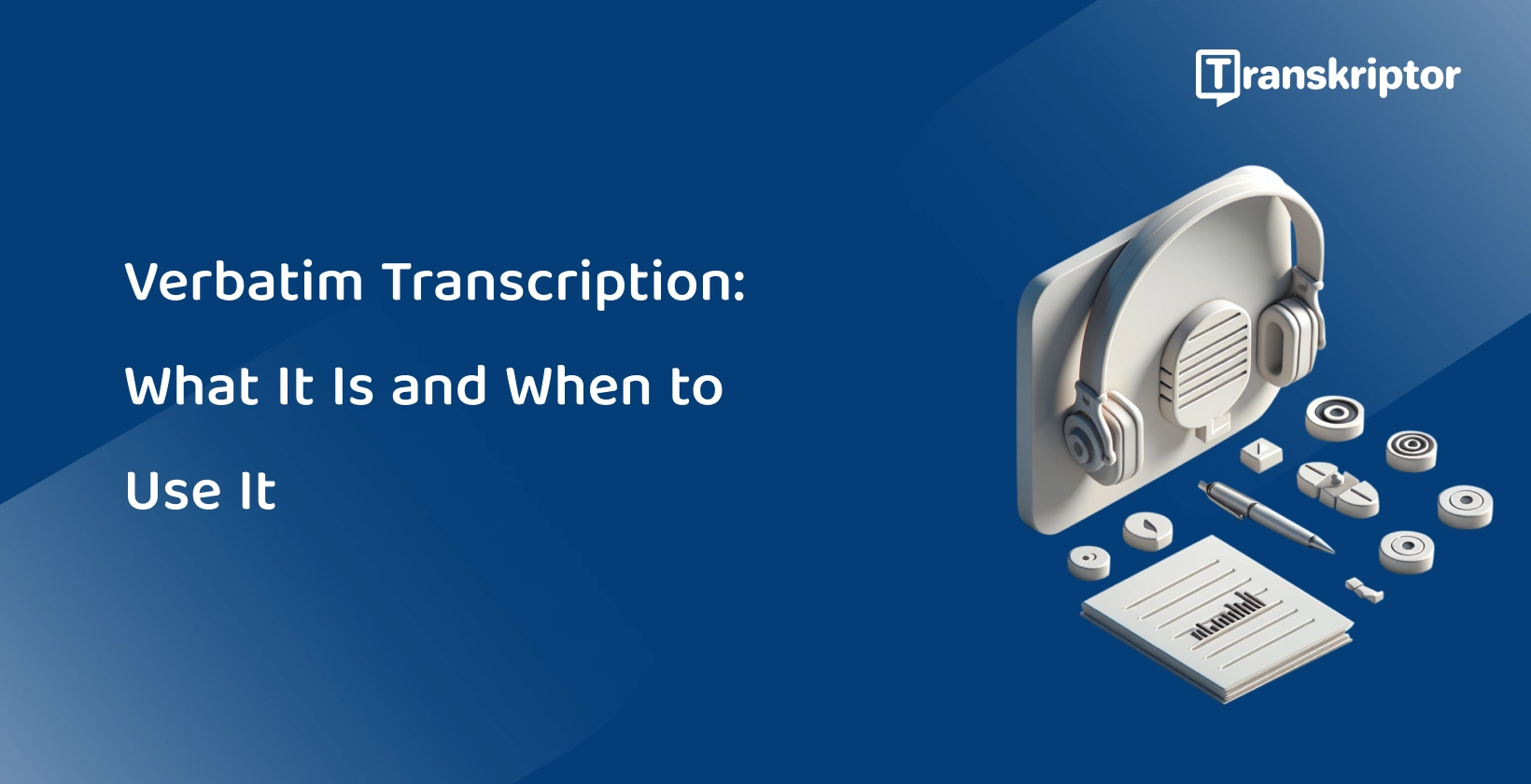What is Verbatim Transcription?
At its core, verbatim transcription is the process of converting spoken language into written text, including every word, sound, and utterance exactly as they are spoken. Unlike clean verbatim, which cleans up the transcript by removing fillers, false starts, and non-essential sounds, verbatim transcription captures the dialogue in its rawest form. This includes stutters, repetitions, and non-verbal cues like laughter or sighs, providing a comprehensive and accurate record of the audio.
The fidelity of verbatim transcription to the original audio makes it invaluable in contexts where the manner of speech, as well as the spoken words, are of significance, such as legal proceedings.
Uses and Applications of Verbatim Transcription
Verbatim transcription is not for every situation, but in certain contexts, it’s irreplaceable. Here’s where it shines:
- Legal Proceedings: In the legal arena, every word can carry weight in judgments and decisions; this means that verbatim transcripts of interviews, depositions, and courtroom sessions ensure that nothing is lost or misinterpreted in the transition from spoken word to written record.
- Qualitative Research: Researchers often rely on verbatim transcription to capture the full breadth of their subjects’ responses during interviews or focus groups; this allows them to analyze speech patterns, pauses, and inflections, all of which can provide deeper insights into participants' attitudes, behaviors, and emotions.
- Journalism: For journalists, verbatim transcripts of interviews also ensure accuracy in reporting and allow readers to see the full context of quotes and statements.
- Media Production: In film and television production, verbatim transcripts of dialogue and on-set interactions are essential for editing, dubbing, and subtitles, ensuring that the final product remains true to the original recording.

Techniques and Practices in Verbatim Transcription
Active Listening
Active listening is foundational in verbatim transcription; it transcends mere hearing, and instead demands an understanding of the context, interpretation of non-verbal cues, and recognition of speech nuances. Honing this skill ensures that the transcription captures the full essence of the spoken word, including the tone and underlying meanings.
Time-stamping
Incorporating time stamps into the transcript at regular intervals or significant moments is also a critical practice; this helps facilitate easy cross-referencing and navigation within the audio file, making the transcription more useful for detailed analysis or review.
Non-verbal Cues
Capturing non-verbal cues such as laughter, sighs, and other relevant sounds adds depth and meaning to the transcript; these cues can provide insight into the speaker's emotional state or emphasize certain points, enriching the overall understanding of the dialogue.
Speaker Identification
Finally, accurately identifying and differentiating between speakers is another essential element of verbatim transcription, particularly when it comes to recordings with multiple participants. This practice ensures clarity and aids in the accurate representation of dialogue, which in turns renders the transcript more readable and informative. At Transkriptor, our speech-to-text service offers multiple speaker identification, making it easy for you to differentiate one speaker from the next.

Verbatim Transcription Tools
Transcriptionists leverage various tools to enhance accuracy and efficiency in verbatim transcription:
- Transcription Software: Programs like ours offer speech-to-text transcription in over 100 languages, with in-built tools to help you achieve the perfect verbatim finished piece.
- High-Quality Headphones: Clear audio is crucial for catching every utterance when transcribing, so noise-canceling headphones are a must-have for any budding transcriptionist.
- Speech-to-Text Software: AI-powered transcription services can also serve as a starting point for creating a verbatim transcript; output can then be meticulously reviewed and corrected by a human transcriptionist if necessary.
Accuracy and Challenges
Ultimately, the goal of verbatim transcription is unparalleled accuracy - but achieving this can be challenging. Background noise, overlapping speech, and low-quality recordings can all hinder the transcription process; additionally, the time-consuming nature of transcribing exactly as spoken, including all ums, ahs, and pauses, can be daunting.
Despite these challenges, the value of verbatim transcription in certain contexts cannot be overstated; whether in legal settings, research, journalism, or media production, it provides a detailed, unfiltered, and accurate representation of spoken words, that also includes closed captioning jobs .
So, if you’re tasked with transcribing audio to text , consider whether verbatim transcription is the right approach for your needs; while it does require patience and skill - or simply the right tools - it does provide insights and accuracy unmatched by any other method. Whether you’re a legal professional, researcher, journalist, or involved in media production, mastering verbatim transcription can be a valuable asset in your professional toolkit.

